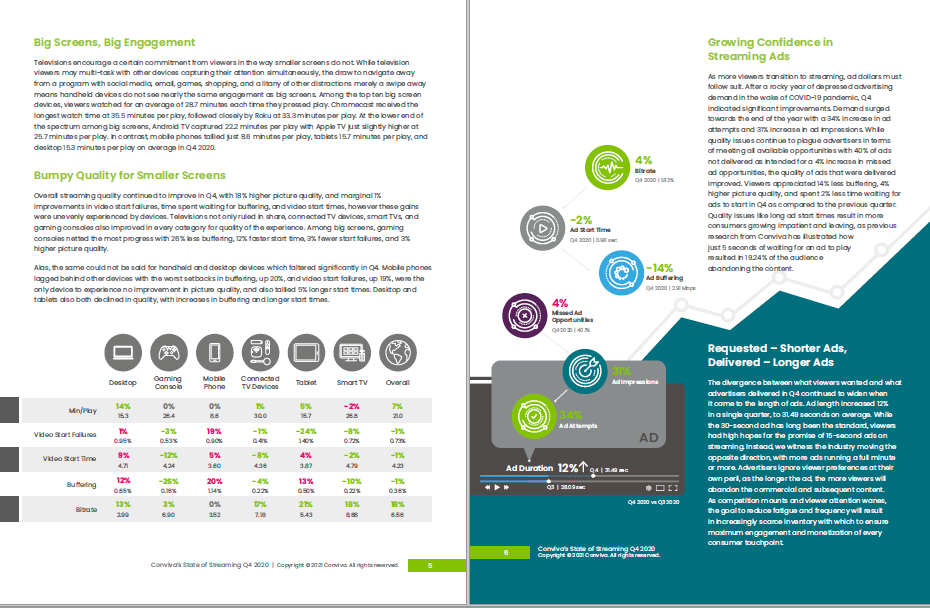🚴 4 Ideas for Marketing Across Long Sales Cycles
With tips from some of Twitter's greatest marketing minds
Hi! 👋
In The B2B Bite, I break down the most interesting marketing stories into fun-size, actionable chunks to kick off your week.
Sent every Monday AM. Best enjoyed with coffee.
Sign up below for free.
It All Started With A Tweet...
🏝️ Seeking the Attribution Oasis
Like you, I'm an avid consumer of B2B marketing-related content.
I hope you don't think I'm being presumptuous. But the fact that you're here, with me.... well, it gives me a good deal of confidence I'm right.
However, there's something that's been nagging me for the last few years. There doesn't seem to be much content out there that talks directly to people like me. Which leads to the question - who even am I?
No, you aren't witnessing the beginnings of my existential crisis. That started long ago and me and Petunia (yes, I've named her and yes, she looks uncannily like her namesake from Harry Potter) have come to a sort of uneasy, temporary truce. What I'm talking about is the kind of B2B marketer I am - which is one that works in enterprise.
What does this mean?
Customers with big budgets for big annual contract values (ACVs)
Great retention. After all, lots of processes/people ultimately rely on whatever it is they've bought
High opportunity to upsell, as it's easier to create a competitive moat once you're in
Bigger decisions and bigger risks make for long sales cycles
This type of company thinks differently to a SaaS SMB (small business) customer, who usually prioritise a quick, simpler sale, with a lower ACV and low touch sales involvement.
What we have here are two different scenarios that require two different marketing mindsets. On one hand, it's arguable that marketing takes on a more dominant role in SaaS, with a clearer route to establishing a funnel and quickly measuring ROI against spend. After all, if you're sales cycle is six weeks, it doesn't take too long to see where a hole in a strategy needs to be patched.
But for enterprise... well, marketers could spend years wandering through a desolate marketing wasteland, seeking an attribution oasis that is always just over the horizon.
That's why this week I sent out this tweet:
I wanted to know how others approach the challenge of marketing across long sales cycles; to find a community united by a common struggle. Below I've selected some of my favourite responses.
#1. Build a Content Moat

SaaS companies do this phenomenally well. Hubspot, Intercom, Drift, Baremetrics, Chargify, ProfitWell, Atlassian, Buffer - they all have blogs that are a genuine pleasure to read.
They don't do this for fun. They do this because in the fast-paced world of tech, demonstrating your thought leadership and building credibility by offering free, ungated information has been proven to deliver a direct result to the bottom line.
But it takes time. It takes investment. It takes expertise. Producing high-quality content consistently isn't for the faint-hearted, especially in enterprise B2B where the success of any single piece may not be seen for months, if not years. However, if done well, it can be extremely effective in creating a competitive strategic moat.
Take Andreesen Horowitz, the VC firm, who announced this week that it was "doubling down" on "speaking directly to [its] audience" by launching its own separate media property. This comes off the back of building a sizeable audience via blogs, newsletters, podcast and video since 2009. It’s arguable that this effort in building a content powerhouse has accelerated its success - from persuading founders seeking investment it understood their space while cementing its position as Silicon Valley thought leader.
🥡 Takeaway
If I were building a content strategy from scratch, here's where I'd start:
Prioritise evergreen content. You're not a newsroom, no one is expecting you to report the day's events from your industry - nor do you likely have the resources to compete with those that already do. Focus on content with a long shelf life that will be as relevant in six months as it is today.
Pick one channel and do it really well. Individuals can stretch themselves too thin; so can businesses. While it's tempting to simultaneously launch a newsletter, blog, Instagram handle and Twitch account, you're just diluting the potency of your effectiveness. Sean Blanda, Director of Content, talked about this when I interviewed him for B2B Better last year.
Create once, distribute forever. While I advocate for focussing on creating unique content for one channel in the early days of a company's strategy, I also believe distribution is king. Every asset can be repurposed. Never let a piece of content be "one and done" - find a way to reformat it and republish somewhere else.
#2. Repeatable Research

As marketers, it's natural to want to keep things fresh. That's why sometimes you'll see a company update their logo three times in five years. But often the best ideas are the ones that are repeatable; something you can roll out year after year and be confident in seeing results.
One of the best ways to do this is with your own research. It's never been easier to work with a company like SurveyMonkey or Attest to gather insights on your industry that can form the basis of a report that appeals to your target customer.
Take Conviva, an online video analytics company. Each quarter the company publishes its 'State of Streaming' report (see above) that is built on their own platform data. The format doesn't change greatly each issue, but the insights are updated and always make a splash with trade media.
🥡 Takeaway
With long sales cycles, half the battle making sure that your company name is the first one to come to mind when a customer is ready to buy. Producing a high-quality, replicable asset like a 'State of the Industry' is a great way to achieve that. You'll know you've done well when people start asking when the next one is coming out.
#3. Investing in Brand

There's a great report from the minds behind the B2B Institute on the trends that will define our humbling profession over the course of the next decade.
One of the main arguments it presents is a compelling case that B2B marketers have leaned too far towards prioritising sales activation tactics over brand building in their never-ending quest of securing ever-cheaper leads - all to satisfy boards who don't truly understand the value of long-term brand equity.
“Talking to a finance director about brand iconography is like going to the head surgeon at St. Mary's Hospital and suggesting they trust in the healing power of crystals.”
- Rory Sutherland, Executive Creative Director, OgilvyOne
To be clear, executives aren't necessarily to blame in this scenario. At face value, it's a clear-cut decision for a CFO when faced with deciding to award budget either towards winning a potential 1,000 new potential business opportunities versus a nominal increase in "awareness".
But that puts the onus on us as enterprise marketers to sell the long-term benefit of ‘brand’ to the powers that be. Here are some of the main ones:
Long-term sales. Enterprise customers that work in cyclical industries often make purchases against a pre-defined schedule - think a change of government administration or a sporting calendar. This means the window of sales opportunity is small, so you need your brand to be the first one that comes to a customers mind once they're ready to buy.
Securing meetings. Often in enterprise, simply getting a face-to-face (or Zoom-to-Zoom) with a potential prospect can be taken as a good sign that a commercial opportunity exists, either today or at some point in the future. They are the "lifeblood of all B2B businesses" after all. And one of the best ways to ensure a client picks up the phone is making sure they know who you are before you call.
Exit strength. While it's relatively easy to attach a value to a company based on its financials, don't underestimate the effect of brand when seeking a improve a business' sale value - it can also be an enormously powerful negotiating tool. Just think of when Unilever successfully back Tesco into a corner over 'Marmitegate'.
🥡 Takeaway
Ultimately, the ideal split between brand sales activation vs. brand building should be 50/50. The former is you putting yourself in front of your customers. The latter brings them to you.
#4. Start a Podcast

If you've followed me for a while, you know how strongly I believe in the power of podcasts. There's a lot of things I love about them, like the ability to challenge yourself creatively or making something that can be repurposed in a bunch of different ways.
But the main reason why I believe every B2B company should have a podcast is because of its ability to help break down the 'wall of no' with customers unwilling or unable to give a testimonial. I wrote about this at length in my last blog post.
Brett's point here is the other side of the same coin. Hosting a podcast gives a company a legitimate reason to engage potential clients in a non-salesy way. For them, an opportunity to showcase their expertise and shout about their success. For you, a door through which to start building a long-term relationship.
#5. Honourable Mentions






🍴 Nibbles
Dave Harland is the kind of guy I'd want to grab a beer with. Or ask to fight a surplus MOT charge on my behalf. Or give a toast at my wedding that is equal parts risqué and tearjerking. His newsletter on marketing and copywriting has yet to fail in making me snarf milk through my nose in laughter. Possibly a sign I need to cut back on dairy? Subscribe here.
Are you even a copywriter if you don't follow Masooma Memon? This week the B2B SaaS writer penned and published an awesome piece on how to work with freelancers that is a must-read for anyone who... well, works with freelancers. My favourite tip - "Remember to give the freelance writer room to work. If you’ve carefully vetted them when hiring, you’ll know they’re professionals who have solid work processes in place."
...…and here’s my podcast
Every two weeks I sit down with a marketing leader to lean how they hit their goals by thinking outside the box - and dig into how this can be applied to other B2B businesses. Here are a few of my most recent episodes.
What it Takes to Build a Successful B2B Community w/ Christina Pashialis
Tell Me Why… You Need Pop Culture in B2B Marketing w/ Brianne Fleming
Building a 10,000 Strong B2B Email List from Scratch w/ Sean Blanda
How to Use Instagram to Promote People and Culture w/ Nicole Tabak
You can also find the B2B Better on Apple Podcasts and almost all other podcast directories.
And that's it! See you next week.









